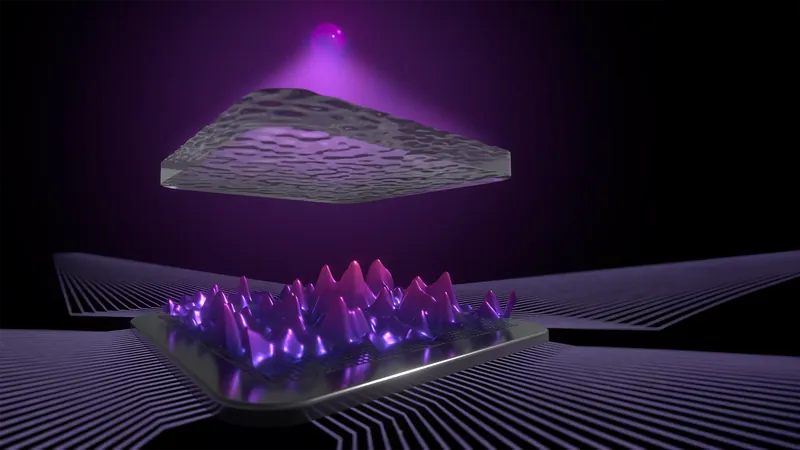
AI Breakthrough: Unlocking the Secrets of Precision in Imaging!
2025-06-11
Author: Daniel
Pushing the Boundaries of Optical Precision
In a groundbreaking collaboration between TU Wien, the University of Glasgow, and the University of Grenoble, researchers have posed a pivotal question: What is the ultimate threshold of precision achievable through optical methods? This international team hasn't just theorized about precision limits; they've developed advanced AI algorithms that approach these pristine thresholds, particularly in medical imaging.
Identifying the Limits of Clarity
Imagine peering at a tiny object obscured behind a foggy glass pane. You’re not merely seeing a distorted image; instead, you’re confronting a chaotic pattern of light and shadows. How accurately can we discern the object's true location from such confusion? This question is crucial in fields like biophysics and medical imaging, where light scattering can obscure vital internal structures.
The answer lies in a theoretical framework known as Fisher information, which quantifies how much an optical signal reveals about unknown parameters such as an object's position. If the Fisher information is low, then regardless of the complexity of your analysis, precision remains elusive. The research team has managed to delineate an upper limit for the precision achievable in various experimental contexts using this concept.
Harnessing the Power of Neural Networks
While TU Wien provided the theoretical groundwork, an innovative experiment was orchestrated by Dorian Bouchet from Grenoble, alongside Ilya Starshynov and Daniele Faccio from Glasgow. They directed a laser beam at a reflective object hidden behind a murky liquid, capturing drastically distorted light patterns. The conditions varied based on the liquid’s clarity, presenting significant challenges for accurately determining the object’s position.
"To the untrained eye, these images appear random," explains Maximilian Weimar from TU Wien. "However, by feeding numerous images—each paired with a known object position—into a neural network, we enable the AI to learn the connections between patterns and positions. After extensive training, the network can identify an object’s location with remarkable accuracy, even with unfamiliar patterns."
Near-Optimal Precision Achieved
What’s particularly exciting is that the AI's predictions were only slightly less precise than the maximum theoretically permitted precision defined by Fisher information. "Our AI-driven algorithm isn’t just efficient; it’s nearly optimal," reveals Stefan Rotter. "It achieves precision that aligns almost perfectly with the laws of physics."
Revolutionizing Multiple Fields
This remarkable achievement heralds a new era for various fields—be it medical diagnostics, materials research, or quantum technology. The team now plans to join forces with experts in applied physics and medicine to explore the practical applications of these AI-enhanced methods, paving the way for revolutionary advancements in imaging technology.




 Brasil (PT)
Brasil (PT)
 Canada (EN)
Canada (EN)
 Chile (ES)
Chile (ES)
 Česko (CS)
Česko (CS)
 대한민국 (KO)
대한민국 (KO)
 España (ES)
España (ES)
 France (FR)
France (FR)
 Hong Kong (EN)
Hong Kong (EN)
 Italia (IT)
Italia (IT)
 日本 (JA)
日本 (JA)
 Magyarország (HU)
Magyarország (HU)
 Norge (NO)
Norge (NO)
 Polska (PL)
Polska (PL)
 Schweiz (DE)
Schweiz (DE)
 Singapore (EN)
Singapore (EN)
 Sverige (SV)
Sverige (SV)
 Suomi (FI)
Suomi (FI)
 Türkiye (TR)
Türkiye (TR)
 الإمارات العربية المتحدة (AR)
الإمارات العربية المتحدة (AR)